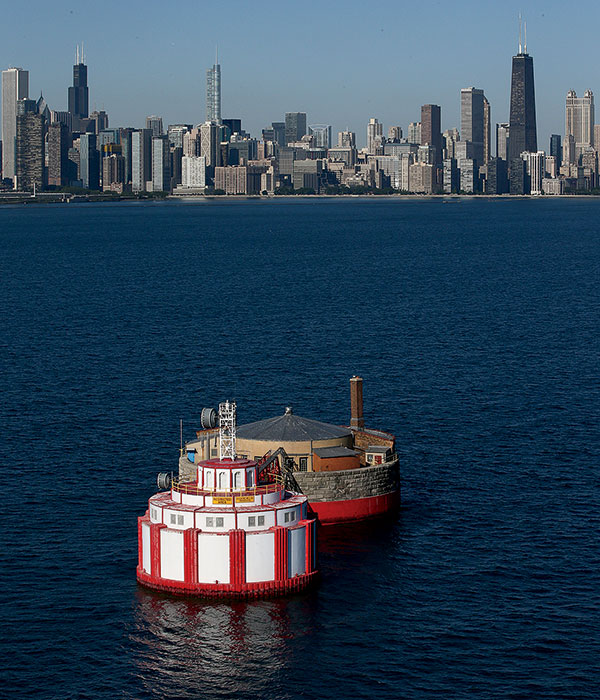
Called water cribs, the imposing structures a couple of miles offshore are a key part of our drinking water infrastructure. Ellis S. Chesbrough, Chicago’s first city engineer and the same guy responsible for elevating downtown’s buildings out of the mud, developed them in the 1860s to protect the structures that siphon water through tunnels 200 feet below the lake and into Chicago’s two treatment plants. Until the mid-1990s, the cribs were manned 24/7 by “crib keepers,” who lived in little houses on top of the manmade islands for a week at a time, keeping the shafts and intakes clear of ice and debris. These days, those processes are automated. Only two of the six cribs still standing are functional, using a mix of gravity and pumps to deliver clean water to the city.


